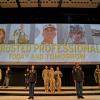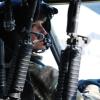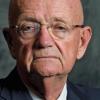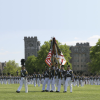It was 1862 and Maj. Gen. William T. Sherman found himself occupying Memphis, Tenn., a hotbed of Southern sentiment. It could not have been easy. A division commander under Maj. Gen. Ulysses S. Grant, Sherman had some time to go before experiencing success and glory. Now he faced the daunting prospect of administering a hostile population in time of war and national rebellion with the existence of the Union at stake. To make matters worse, he was being vilified in the press.In an earnest letter to a local newspaper editor, Sherman penned these words: “It is enough for the world to know that I...
Five soldiers with a collective 120 years of experience have some words of wisdom for NCOs transitioning to civilian life. They appeared on a panel I moderated in New York City in June 2014 to give some tips about how to prepare for a post-Army life and get attention in a competitive job market. Their discussion comes at a time when transition is on the minds of many soldiers because of the drawdown that would trim the ranks by some 60,000 people over the next three years. If you are not going anywhere, there are people in your command who might be headed to civilian life who could use your...
The U.S. Army has long been known for its so-called can-do spirit, but optimism about the ability to succeed in any mission is waning. Senior Army leaders are warning the size of force and tight budgets are creating an unthinkable possibility of sending soldiers into battle who are not fully prepared.“Military risk is accumulating exponentially,” Army Chief of Staff Gen. Raymond T. Odierno said in October during AUSA’s Annual Meeting and Exposition in Washington, D.C. In 2012, Army leaders took a look at the world situation and decided the active duty force could drop to 490,000 people. Two...
In early 2013, the Pentagon lifted the ban on women serving in U.S. combat units, mandating that the change be put into place by 2016. The lifting of the ban would open up more than 200,000 jobs in the ground-level combat force of the Army and the Marine Corps.From this order came several approaches to meet the 2016 deadline. The Marine Corps took an aggressive approach and almost immediately opened up its enlisted Infantry Training Course and Infantry Officers Course to women. While the completion rates of these courses among women were minimal, it’s still a pioneering advancement toward the...
Where Did ‘the Good War’ Go Wrong?The Good War: Why We Couldn’t Win the War or the Peace in Afghanistan. Jack Fairweather. Basic Books. 416 pages. $29.99.
Where Did ‘the Good War’ Go Wrong?The Good War: Why We Couldn’t Win the War or the Peace in Afghanistan. Jack Fairweather. Basic Books. 416 pages. $29.99.
Where Did ‘the Good War’ Go Wrong?The Good War: Why We Couldn’t Win the War or the Peace in Afghanistan. Jack Fairweather. Basic Books. 416 pages. $29.99.
Freshman Class for 114th Congress Includes 8 Army VeteransThe freshman class of the 114th Congress convenes Jan. 6 with two senators and six representatives boasting Army experience, part of a movement that is bringing a generation of Iraq and Afghanistan veterans to Congress as World War II veterans depart.New to the U.S. Senate is Sen. Tom Cotton, R-AR, a former Army captain who deployed to both Iraq and Afghanistan. Between deployments, he served as a platoon leader for the 3rd U.S. Infantry Regiment (The Old Guard). Commissioned in 2005, Cotton deployed to Iraq in 2006 as part of the 101st...
1. What was AUSA’s greatest accomplishment in 2014?We did three important things to help the Army. First, we sounded the clarion call for a trained and ready Total Army, now and in the future. Second, we led the charge to kill sequestration, stop downsizing the Defense Department and build a balanced joint force. Third, we reinforced Army’s messages regarding not only an inability to execute the defense strategy, should sequestration remain, but also the cost in lives and spilled blood of being unprepared.2. What are some major issues facing the Army in the next year?There is a lot at stake...
Some of the most important lessons we can learn from the last 13 years of war relate to the intellectual requirements of leadership. In complex and dynamic operational environments like Iraq and Afghanistan, understanding the social, cultural, economic and political contexts was critical to our success. We found that effective leaders used their acquired understanding to recognize, create and exploit opportunities to accomplish the mission and advance our national interests. Of course, advancing our interests in complex environments also requires interpersonal skills and the will to...
The Army Operating Concept, published Oct. 7, expands the idea of joint combined-arms operations to include intergovernmental and special operations capabilities, said Lt. Gen. Herbert R. McMaster Jr.The new concept includes prevention and shaping operations at the strategic level across domains that include maritime, air, space and cyberspace, he said.It’s a "shift in emphasis," said McMaster, deputy commanding general of the Army’s Training and Doctrine Command for Futures and director of the Army Capabilities Integration Center.He spoke at a "Warrior’s Corner" presentation during the...
The successful transformation of West Point’s History of the Military Art course could hold the key to dramatic improvements in Army learning. In order to educate and train the next generation of professional soldiers, content and curricula must be delivered in the way that the millennial generation consumes information. This has now been tested and proven by leveraging technology to breathe new life into a course best remembered by many for its massive war atlases, often 300 pages or more, depicting the movement of divisions, corps and armies on hundreds of detailed...
Maj. James Howell of the 173rd Airborne Brigade put it this way: Expecting the unexpected is in every American soldier’s job description.Howell, operations officer, 1st Battalion (Airborne), 503rd Infantry Regiment, spoke on readiness in the context of Operation Atlantic Resolve during a talk in Washington.The talk was held as part of the Warriors Corner series, hosted by the U.S. Army during the 2014 Association of the United States Army Annual Meeting and Exposition.Howell reflected on the deployment of an Army Contingency Response Force (ACRF) out of the 173rd to Poland, Latvia, Lithuania...
In the last five decades, the world’s population has almost tripled and people have been empowered through the Internet and other technologies, said the commander of U.S. Army Special Operations (USASOC).Weapons that in the past belonged only to governments are now found in the hands of non-state actors and even individuals, said Lt. Gen. Charles T. Cleveland, USASOC commander.He also said this requires not only conventional and Special Forces to work together, but explained "persistent influence" requires like-minded militaries and agencies to work together.Cleveland was the lead speaker at...
Sustaining the theme of "Living the Army Ethic," the Sergeant Major of the Army’s professional development forum put boots on the ground by acknowledging the core of the profession of arms: "How and why we fight."Addressing a full house of sergeants major and senior and junior non-commissioned officers at the 2014 Annual Meeting and Exposition of the Association of the U.S. Army, Sergeant Major of the Army Raymond F. Chandler III reiterated what he termed the Army "chief [of staff’s] number one priority: communicating the Army ethic."Chandler put the onus on the audience to actively...














